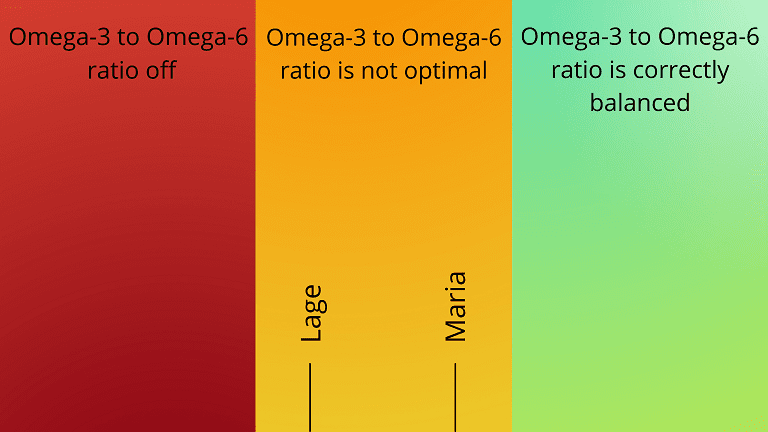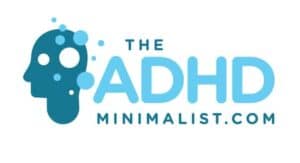
That developing children get the Fatty Acids they need is more important than most people realize.
Fatty Acids (Omega-3, Omega-6, EPA, DHA, and GLA) and balanced meals play an integral role in children’s growth and development. Getting the proper nutrition is vital for eyesight, coordination, learning, and concentration, among other things.
Kids who eat fish, nuts, and vegetables get more fatty acids (Omega-3, Omega-6, EPA, DHA, and GLA) than kids who are picky eaters, but most likely, even healthy eaters are not getting enough of the nutrition they need through food.
My two oldest children have ADHD and Dyslexia. They both like fish, vegetables, and nuts and choose to eat much healthier than their peers. Friends who regularly eat at our house won’t touch most of the veggies and salads I make.
My kids do eat candy on Saturday and have desserts, but I always ensure they eat veggies and have a steady supply of nuts and protein snacks available.

The role sugar plays in the body’s ability to absorb Omega-3 and Omega-6 may be more significant than we realize
We recently tested the kids’ balance of Omega-3 to Omega-6, sending blood tests to the lab for analysis. The results were interesting.
The dietician who helped us explained it like this, ‘Think of the results from the lab as a stoplight. Red = danger, yellow = caution, doing ok but not optimally, and Green = All is good and in balance.’

My kids were both in the yellow zone for low Omega-3 despite eating more veggies, fish, and nuts than their peers.
The abundance of Omega-6 compared to the scarcity of Omega-3 creates an imbalance in most of us.
The kid’s Omega-3 was out of balance with Omega-6, and they are both taking fish oil containing Omega-3 to achieve balance and get their levels up.

In these foods, you can find Omega-6.
In these foods, you can find Omega-3.
Omega-3 is found in fish, fish oil, and flaxseed (although flaxseed oils also contain Omega-6, so if your Omega-6 to Omega-3 ratio is off, flaxseed oil is probably not the answer).
There are three main types of Fatty Acids in Omega-3 ALA, EPA, and DHA.
- Alpha-linolenic acid (ALA). ALA is found mainly in plant oils such as flaxseed, soybean, and canola oils.
- Eicosapentaenoic acid (EPA). EPA are found in fish and other seafood.
- Docosahexaenoic acid (DHA). DHA are found in seafood and fish.
Fatty Acids and the ADHD connection (Omega-3, Omega-6, EPA, DHA, and GLA)
The results of scientific studies on giving Omega-3 and Omega-6 supplements to Kids with ADHD and reading and writing difficulties are interesting.
Mats Johnson is a doctor at the Sahlgrenska University Hospital. He wrote his thesis on non-stimulant alternatives to ADHD medicines, and he spent considerable time studying the effects of Omega-3 and Omega-6 on ADHD.
In 2009 the results of a double-blind placebo-controlled study were published. Seventy-five kids between the ages of eight and seventeen took part in the study. They had all had one of two diagnoses, ADHD or ADD (ADD now known as ADHD inattentive. ADHD is now ADHD predominately hyper and a third component not recognized before 1994 is ADHD combined type). The researchers used the dietary supplement Equazen which contains both Omega-3 and Omega-6. (I used to give Equazen to Lage when he was little, but I switched to only Omega-3 when I realized his Omega-3 to Omega-6 ratio was off.)
The study showed that one child out of four (18 children out of 75 from the study) had positive results from taking Omega-3 and Omega-6.
Great results, but more research is needed on a larger group of kids. It would be interesting if the researchers would take into account what the kids’ Omega-3 to Omega-6 balance was and possibly use a different product that didn’t contain both Omega-3 and Omega-6 on the kids who are out of balance.
Another factor that could affect the study was if the kids had really low Omega-3 or possibly low Omega-3 and Omega-6 at the start of the study. If you don’t measure this, you won’t know what the kids have as a starting point. Kids who had more Omegas in their system probably got better results from the study than those who had very low Omegas. In other words, it’s possible that all the kids could have seen results from the study if they had measured how much Omega-3 and Omega-6 each child had in their body before they started and then catered the study to each child, giving them the optimal amount of Omega-3 or Omega-6 to bring their levels up and create balance.
A few years later, there was another double-blind placebo-controlled study using Equazen that included kids with reading and writing difficulties as well as kids with different types of ADHD. This study showed that kids with rather mild symptoms got the best results from Omega-3 and Omega-6.
Another study from Mexico showed that kids with ADHD could take less ADHD medicine when they took Equazen.
Like I said earlier, I wish they would do more and better tests, but because most of us have low Omega-3, I suggest taking a supplement that only contains Omega-3. I gave Equazen to my son when he was little, and it contains both Omega-3 and Omega-6, but years later, when we tested his Omega-3 to Omega-6 balance, he needed way more Omega-3 than he was getting from Equazen.

(Sources)
https://ods.od.nih.gov/factsheets/Omega3FattyAcids-Consumer/
https://www.webmd.com/diet/foods-high-in-omega-6#1
https://www.gu.se/en/gnc/mats-johnson
https://gupea.ub.gu.se/handle/2077/36752
https://gupea.ub.gu.se/bitstream/handle/2077/36752/gupea_2077_36752_9.pdf?sequence=9

